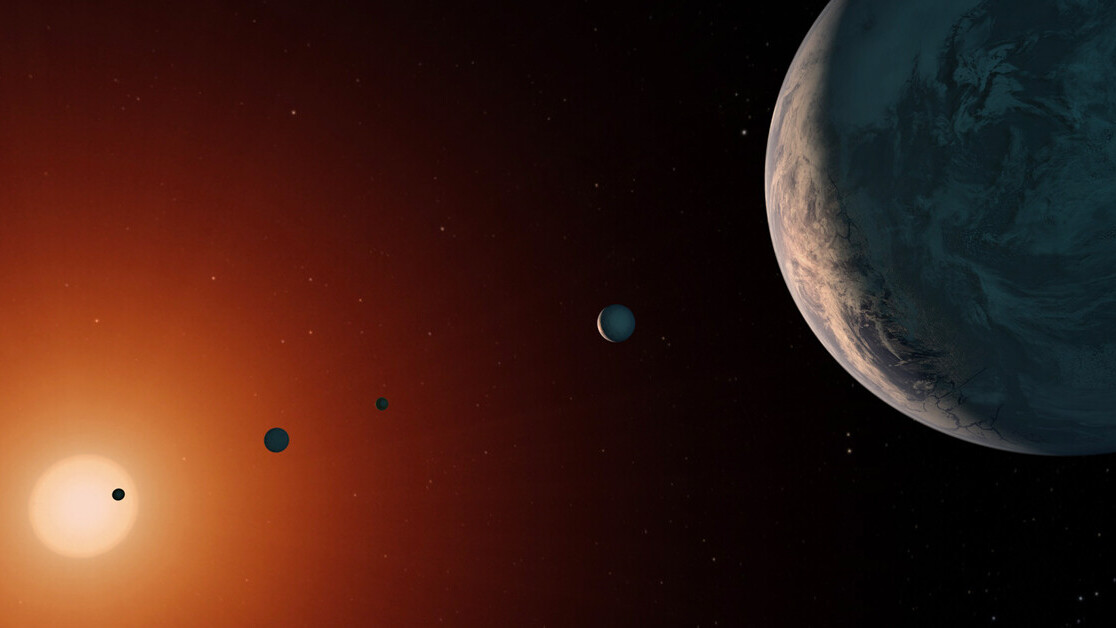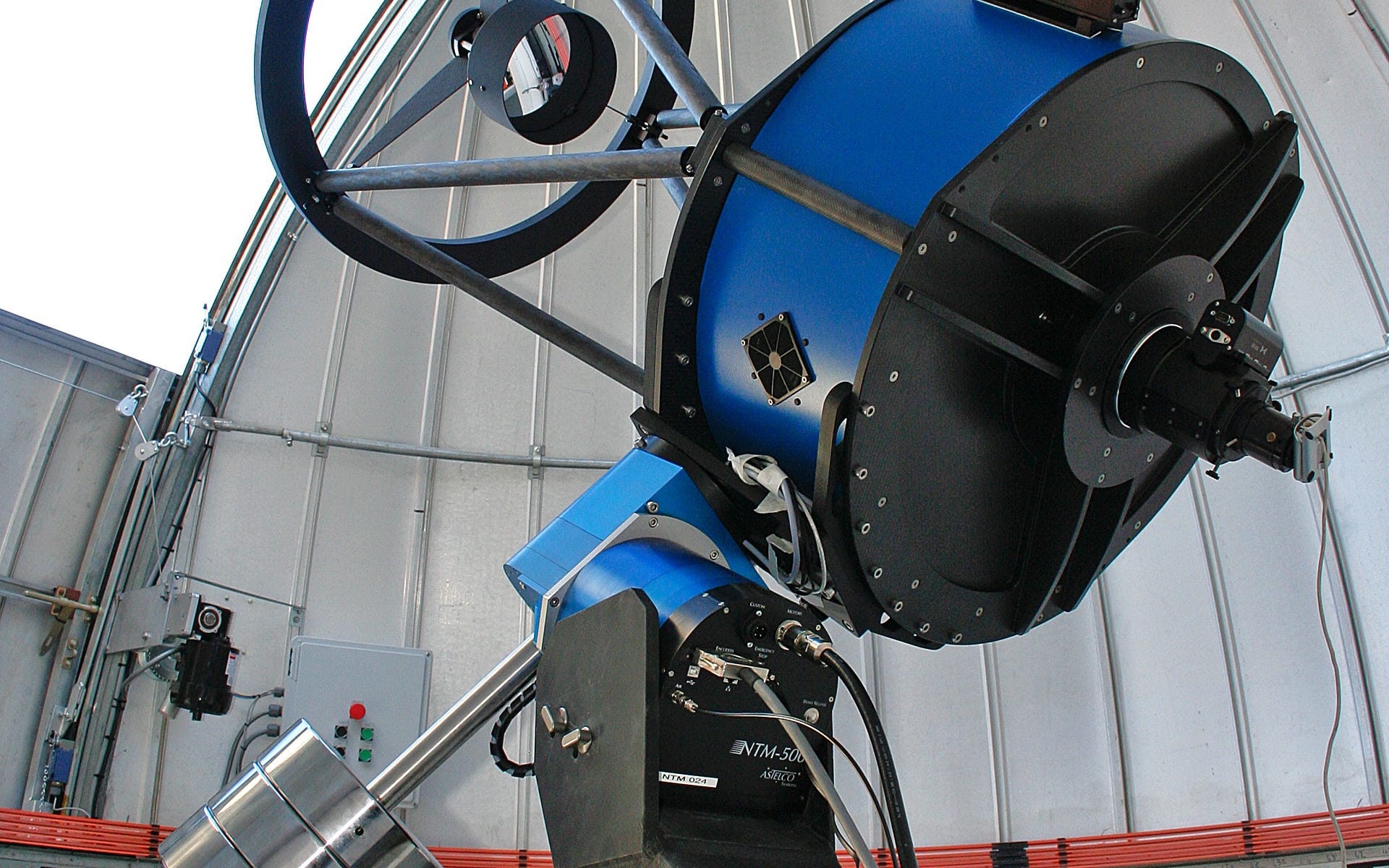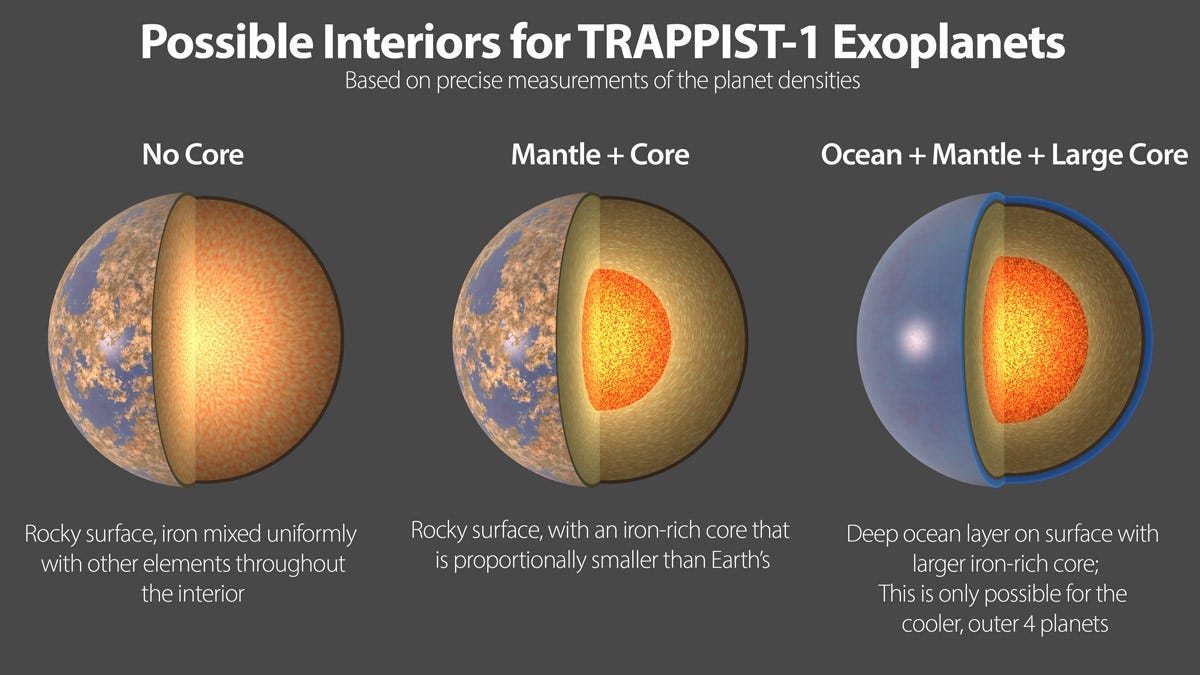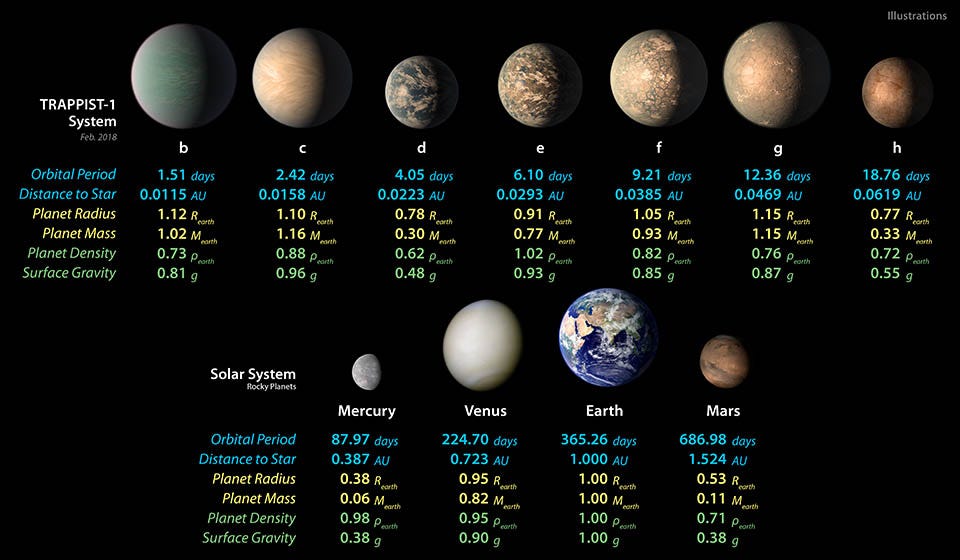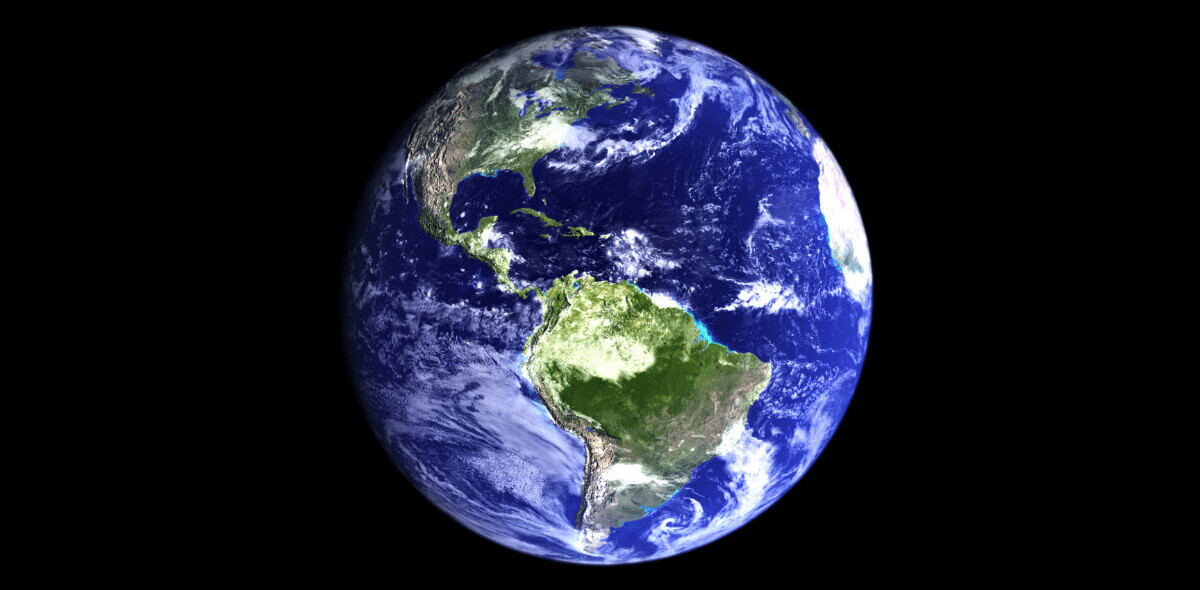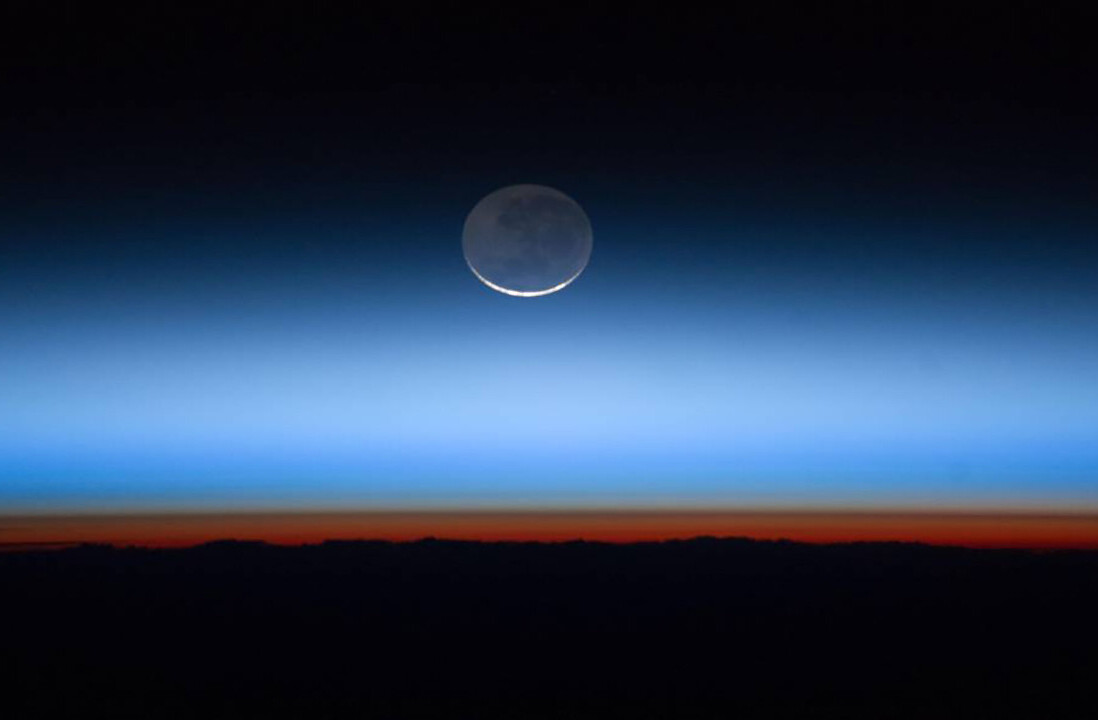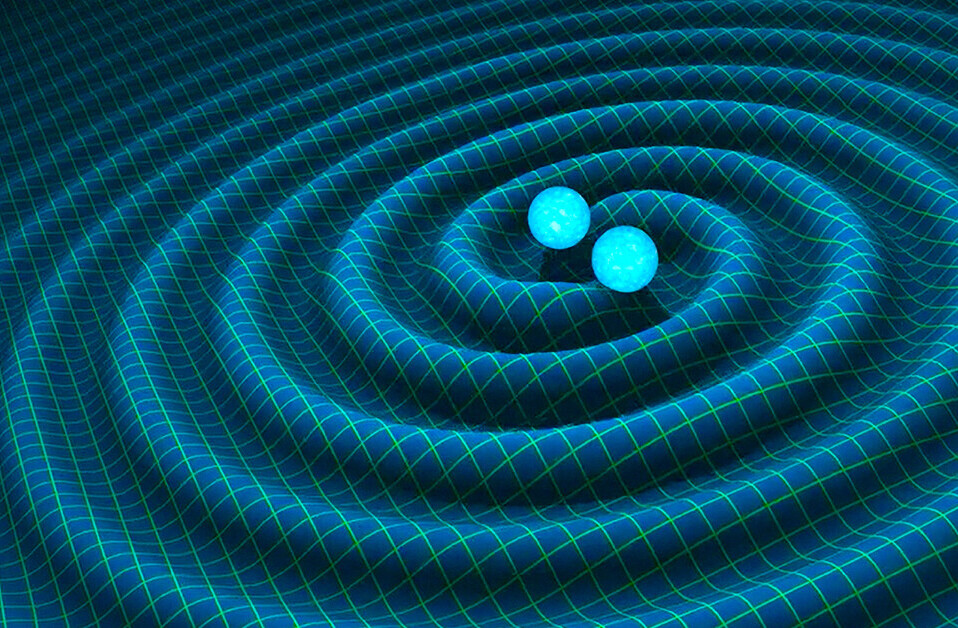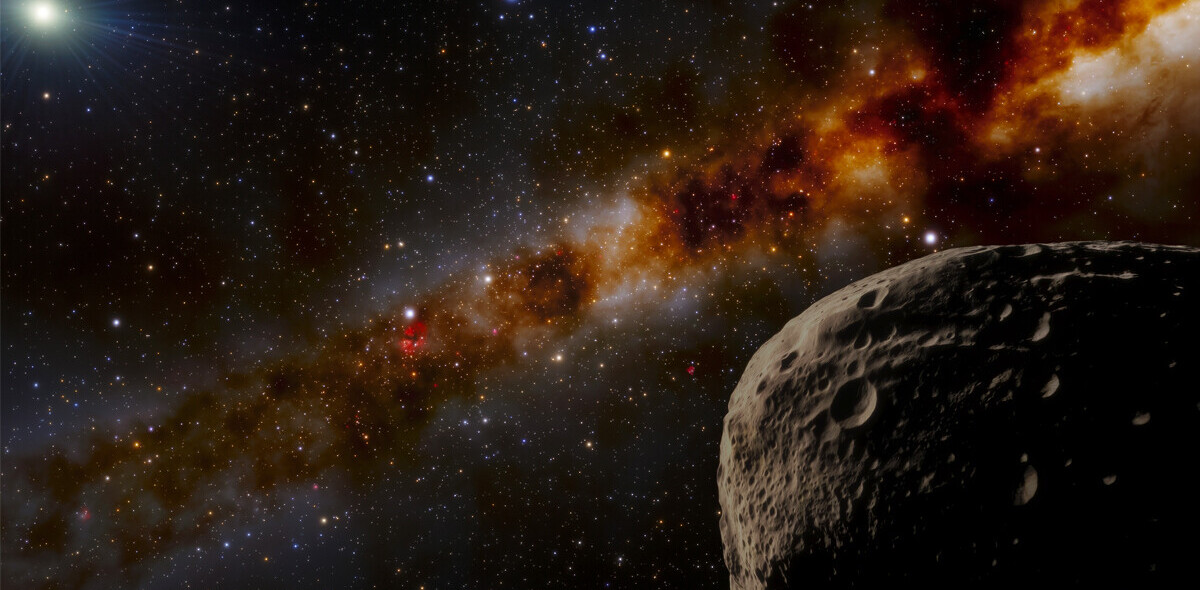Just 40 light-years from Earth, the TRAPPIST-1 system of planets is home to the largest family of Earth-like worlds known to astronomers.
At least seven planets are known to orbit within the TRAPPIST-1 solar system. A new study shows these worlds have nearly identical densities — within just a few percent of each other. This suggests that each of these seven planets could have similar compositions.
“This is one of the most precise characterizations of a set of rocky exoplanets, which gave us high-confidence measurements of their diameters, densities, and masses. This is the information we needed to make hypotheses about their composition and understand how these planets differ from the rocky planets in our solar system,” explained Eric Agol, professor of astronomy at the University of Washington.
Planets of a feather…
Since the discovery of the first three planets of the system in 2016, by astronomers at the Transiting Planets and Planetesimals Small Telescope (TRAPPIST) South in Chile, this family of exoplanets has become the target of intense scrutiny.
This new study pieces together observations of the TRAPPIST-1 system utilizing space-based telescopes including Spitzer (which studied the system for 1,000 hours) and the Kepler spacecraft. These observations were combined with data from the SPECULOOS and TRAPPIST observatories on the ground.
[Read: ]
Earlier studies determined the worlds of the TRAPPIST-1 system are (physically) much like Earth — small, rocky planets. However, these planets were found to all have densities about 8% less dense than Earth.
“NASA’s Hubble Space Telescope was used to find that TRAPPIST-1b and c were unlikely to have hydrogen-dominated atmospheres like those we see in gas giants. This strengthens the case that these planets could be rocky and possibly hold onto water,” NASA officials describe.
Similar densities among this septet of planets suggest they could have similar compositions, researchers speculate. Rocky worlds like those in the TRAPPIST-1 system are thought to be rich in iron, magnesium, silicon, and oxygen.
“The TRAPPIST-1 system is fascinating because around this one star we can learn about the diversity of rocky planets within a single system. And we can actually learn more about a planet by studying its neighbors as well, so this system is perfect for that,” explains Caroline Dorn of the University of Zurich.
All we are is rust in the wind…
Researchers carefully measured the amount of light lost as the planets pass “in front” of their star as seen from Earth, as well as carefully timing how long they took to pass. This data allowed the international team of researchers to determine the diameters and masses of the worlds. From there, planetary densities could be calculated.
“We find that all seven planets’ densities may be described with a single rocky mass-radius relation which is depleted in iron relative to Earth… and otherwise Earth-like in composition. Alternatively, the planets may have an Earth-like composition but enhanced in light elements, such as a surface water layer or a core-free structure with oxidized iron in the mantle,” researchers describe in a journal article published in The Planetary Science Journal.
The planets of our own solar system vary greatly — from Saturn (which could float on water) to Earth — the densest planet in our family of worlds.
Researchers seeking to understand the composition of the TRAPPIST-1 system suggest three possible models for these low-density worlds.
The first idea suggests these intriguing worlds may have iron oxide (rust) scattered throughout their bodies, but no iron core, lowering their density. Another idea suggests Earth-like planets holding significantly less iron than Earth — perhaps 21%, rather than the 32% seen on our homeworld.
A third notion — possible just for the outer four planets — envisions deep ocean worlds centered on a larger core of iron. However, this idea would require these worlds to have 50 times as much water as Earth, and it seems unlikely that all seven planets in the system would have almost exactly the same amount of water.
Maybe Goldilocks was just too fussy
Cat: Is that what I think it is?
Lister: What do you think it is?
Cat: An orange whirly thing in space!”-Red Dwarf
Every known planet in the TRAPPIST-1 system orbits closer to its parent star than the planet Mercury keeps from the Sun. In fact, this system (in many ways) is more like the family of Moons around Jupiter than it is to our own Solar System.
However, the star at the center of this system is a cool red dwarf, so only three innermost worlds are too hot for water to pool on their surface. The outermost planet is likely too cold for liquid water and could be an ice world. However, the three worlds in between these two extremes are in the Goldilocks zone in their solar system, where temperatures are “just right” for liquid water to pool.
Although worlds of liquid water suggest the possibility of life, planets in the TRAPPIST-1 system could also be subject to significant, frequent bursts of radiation from stellar storms, possibly wiping out any life that developed there.
The upcoming launch of the James Webb Space Telescope (JWST) promises to greatly advance our knowledge of exoplanets, including their atmospheres. And, this instrument, scheduled for launch later this year, could be the first instrument to find chemical signs of life on other worlds. There is a very good chance the first signs of alien life, however primitive, will be seen in the TRAPPIST-1 system.
This article was originally published on The Cosmic Companion by James Maynard, founder and publisher of The Cosmic Companion. He is a New England native turned desert rat in Tucson, where he lives with his lovely wife, Nicole, and Max the Cat. You can read this original piece here.
Astronomy News with The Cosmic Companion is also available as a weekly podcast, carried on all major podcast providers. Tune in every Tuesday for updates on the latest astronomy news, and interviews with astronomers and other researchers working to uncover the nature of the Universe.
Get the TNW newsletter
Get the most important tech news in your inbox each week.
